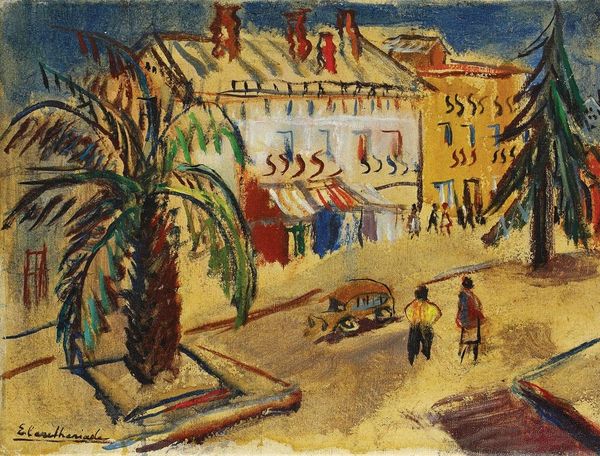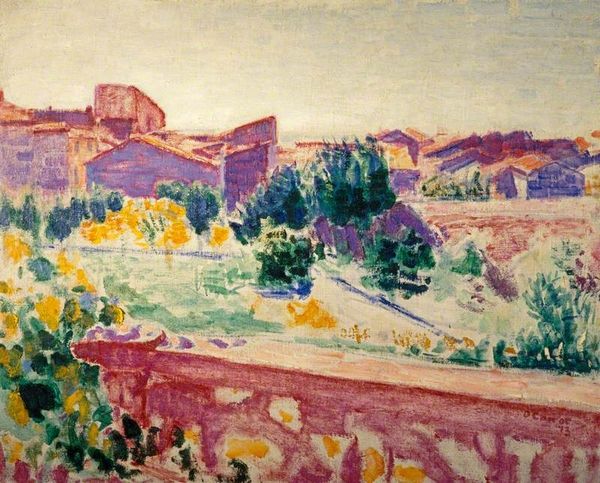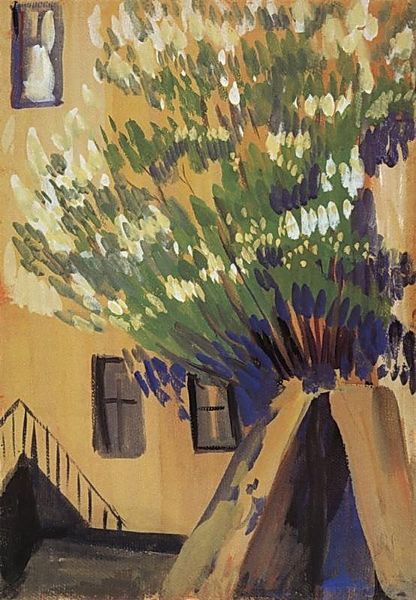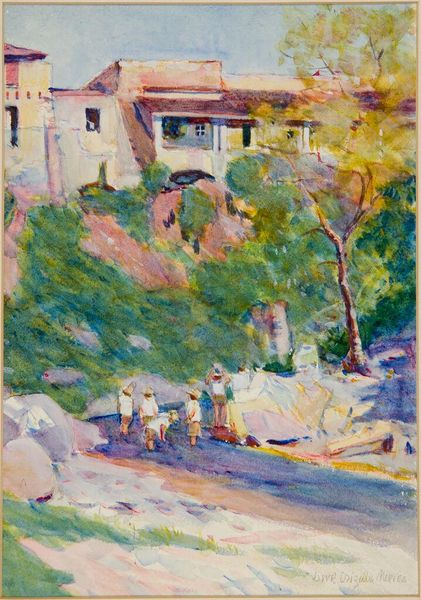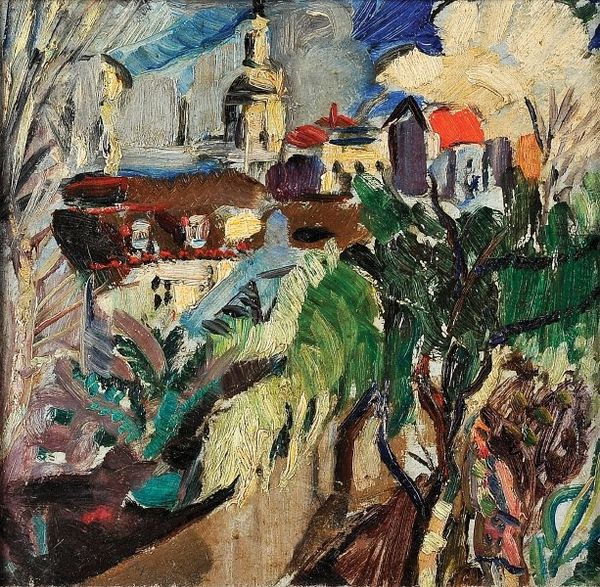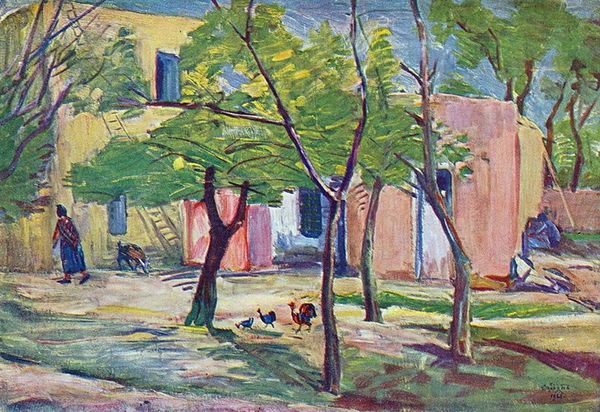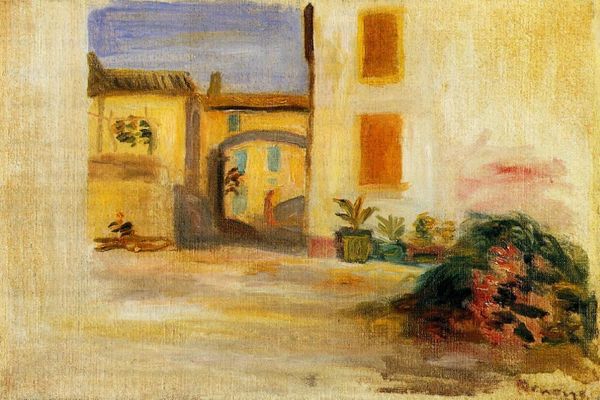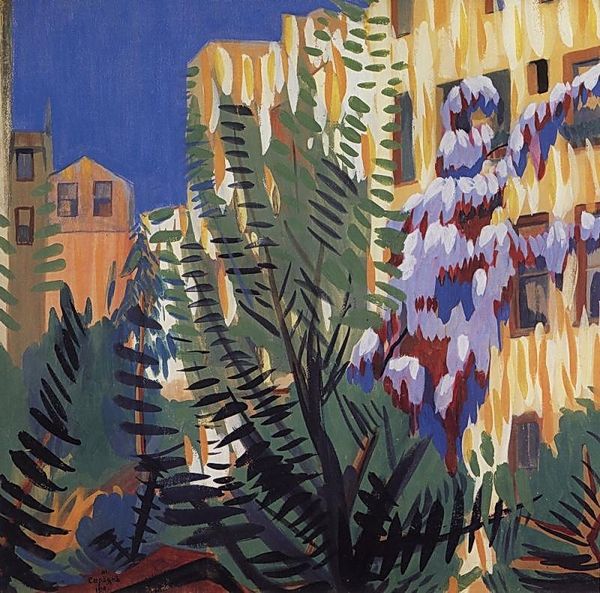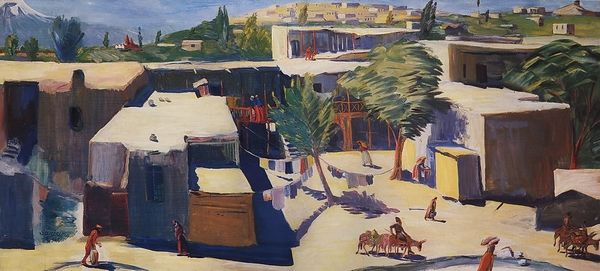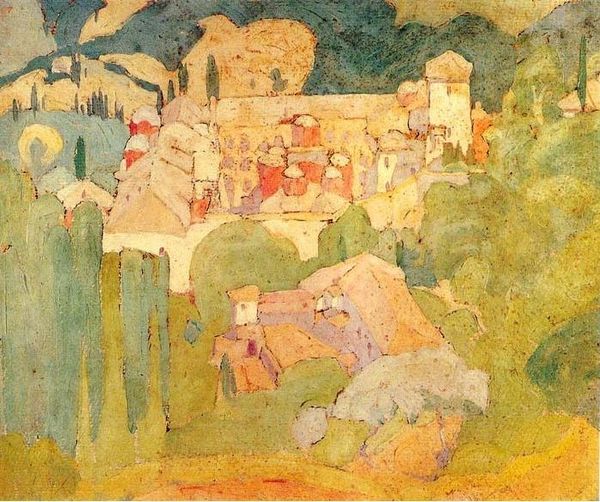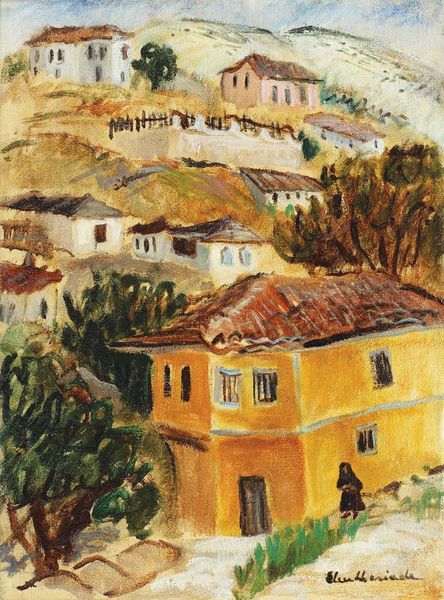
painting, oil-paint
#
narrative-art
#
painting
#
oil-paint
#
landscape
#
impressionist landscape
#
figuration
#
handmade artwork painting
#
oil painting
#
expressionism
#
naive art
#
orientalism
#
modernism
#
expressionist
Dimensions: 72 x 107 cm
Copyright: Martiros Sarian,Fair Use
Editor: This is "Yard in Yerevan" by Martiros Sarian, painted in 1928 using oil on canvas. It strikes me as an almost dreamlike snapshot of daily life, with these incredibly vibrant colors. What do you see in this piece, especially considering the time it was created? Curator: What immediately captures my attention is how Sarian uses this seemingly idyllic scene to reflect Armenia's complex negotiation of tradition and modernity in the early 20th century. Consider the figures: some are dressed in traditional garb, engaged in what appear to be age-old routines, while the artistic style itself, leaning toward expressionism, is distinctly modern. How does the use of color and light play into this dynamic, in your opinion? Editor: The bright, almost Fauvist colors feel like a celebration of Armenian culture, but the slight distortion and simplification hint at a more nuanced perspective. It's not just a straightforward depiction of beauty, is it? Curator: Precisely. The choice of depicting an everyday "yard" elevates the ordinary to a space worthy of artistic contemplation, suggesting that Armenian identity is embedded in these simple, quotidian settings. Now, think about the animals—the donkey, the dog. Could they be read as symbols, perhaps of labor or a connection to the land? Editor: That's an interesting point! They could represent the working class and the deep roots of Armenian society in agriculture, adding a layer of social commentary to what might initially seem like a purely aesthetic landscape. Curator: And let’s consider Sarian’s broader artistic practice; his work consistently grapples with themes of cultural identity in the face of political upheaval. He uses landscape not just as a backdrop but as a stage for exploring collective memory and resilience. It invites reflection on how artists use their work to negotiate complex political and social realities. Editor: It’s fascinating how much history and commentary can be packed into a seemingly simple scene. I see now that it is a potent symbol. Curator: Indeed. And by examining such a symbolic image closely, we can truly begin to grapple with the social dimensions present in Armenia during that time.
Comments
No comments
Be the first to comment and join the conversation on the ultimate creative platform.
